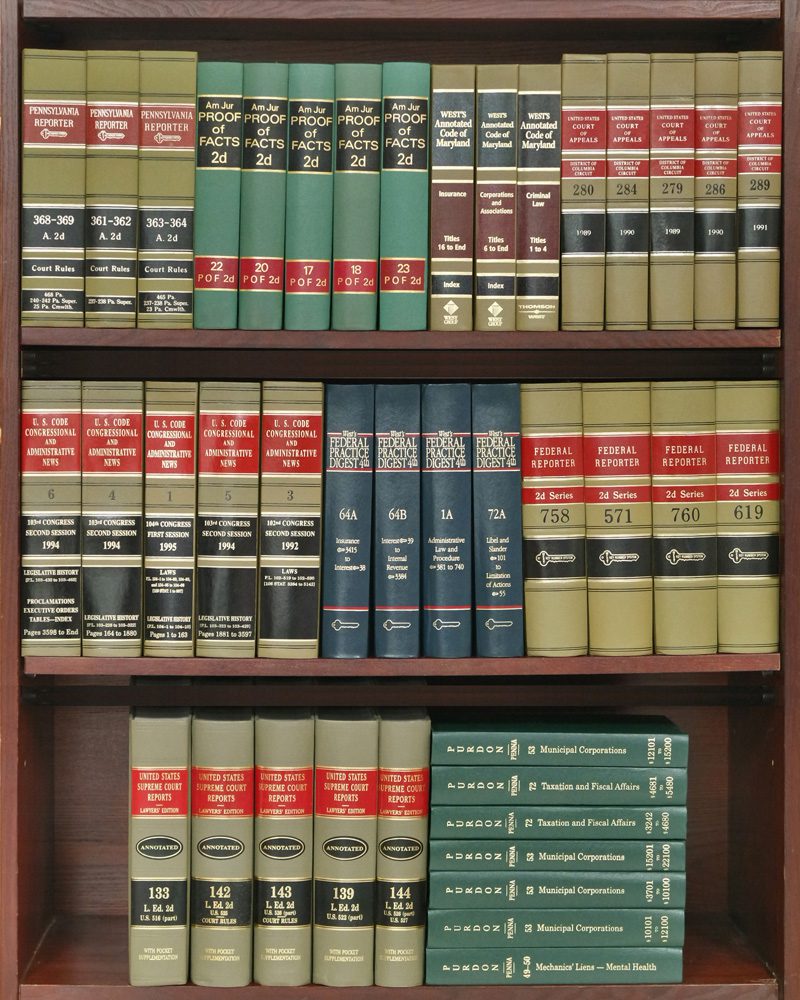Tejal Chetan Rathod v. Central Bank of India & Ors.
Tejal Chetan Rathod
…Appellant
Central Bank of India & Ors.
…Respondent
Case No: Misc. Appeal No. 33/2010
Date of Judgement: 09/10/2023
Judges:
Mr Justice Ashok Menon, Chairperson
For Appellant: Tejal Rajmani Verma along with Ms Kinjal Jain, i/b M/s. Navdeep Vora & Associates, Advocate.
For Respondent: Mr T. N Tripathi, i/b M/s T. N. Tripathi & Co., Mr Bhavik Jain, i/b K. R. Shekhawat, Advocate.
Download Court Copy CLICK HERE
Facts:
This is an order dated 09/10/2023 passed by the Debts Recovery Appellate Tribunal (DRAT), Mumbai in Misc. Appeal No. 33/2010. The appellant is Tejal Chetan Rathod. The respondents are Central Bank of India & Others. The appeal impugns the judgment and order dated 21/01/2010 passed by the Debts Recovery Tribunal-II (DRT), Mumbai in M.A. No. 62 of 2009. In the DRT order, the application filed by the appellant under Section 19(25) of the Recovery of Debts Due to Banks & Financial Institutions Act (RDDB&FI Act) was dismissed. The subject matter of the dispute is Flat No. 201, 2nd floor, C-Wing, Building No. 2 Amazon Park, Village Eksar, Taluka Borivali (East), Mumbai (the “subject flat”). The 6th respondent builder, M/s R J Constructions, had allegedly agreed to sell the subject flat to the 4th respondent through an unregistered agreement for sale dated 06/01/1999 for a total sale consideration of Rs. 26,75,000/-. An advance of Rs. 26,750/- was paid by the 4th respondent, but the balance amount was defaulted, leading to termination of the agreement by the builder on 29/11/2007. Respondents 2 to 5 had availed a loan from the 1st respondent bank (Central Bank of India) on 28/11/2000, and the 4th respondent allegedly created an equitable mortgage by depositing the unregistered agreement for sale. The loan was defaulted, leading to the filing of Original Application (O.A.) No. 365 of 2003 by the bank before the DRT for recovery of the outstanding debt. Vide order dated 09/09/2005, the DRT allowed the O.A. and granted a charge over the mortgaged flat in favor of the bank. A Recovery Certificate was issued on 05/12/2005. The bank took symbolic possession of the subject flat under SARFAESI Act on 13/03/2006 and filed recovery proceedings before the Recovery Officer. After issuing a demand notice to the certified debtors, an attachment warrant was issued on 13/07/2006, ordering the attachment of the subject flat. The appellant claims to have purchased the subject flat from the 6th respondent builder on 06/02/2008, being a bona fide purchaser without knowledge of the prior proceedings or the O.A., Recovery Certificate, or attachment. The appellant came to know about the proceedings against the subject flat when she found a notice affixed on the flat. The appellant filed an intervention application before the Recovery Officer on 18/06/2009, which was refused, leading to the filing of the application under Section 19(25) of RDDB&FI Act before the DRT.
Arguments by Appellant:
The main argument raised by the appellant is regarding the validity of the mortgage created in favor of the 1st respondent bank by depositing the unregistered agreement for sale dated 06/01/1999 by the 4th respondent. It is contended that the unregistered agreement for sale would not confer any right, title, or interest over the mortgagor concerning the subject flat, given the bar under Section 54 of the Transfer of Property Act, 1882 (TP Act), Section 4 of the Maharashtra Ownership Flats Act, 1963, and Section 17(1) of the Registration Act, 1908. It is argued that even if the unregistered/unstamped agreement for sale had been produced, it could not have been admitted in evidence due to Section 34 of the Bombay Stamp Act, 1958, and the Registration Act. It is pointed out that there was no specific prayer for the declaration of the mortgage in the O.A. filed by the bank. It is submitted that when the mortgage itself was not valid, all subsequent orders, including the charge decree in the O.A., issuance of the Recovery Certificate, filing of recovery proceedings, and the warrant of attachment, would be illegal and void ab initio, deserving to be set aside under Section 19(25) of the RDDB&FI Act.
Arguments by Respondents:
The respondent bank had filed O.A. No. 365 of 2003 before the DRT for recovery of the outstanding debt, claiming the existence of a mortgage created by depositing the unregistered agreement for sale by the 4th respondent. In the DRT order dated 09/09/2005, a charge decree was granted in favor of the bank concerning the subject flat, and a Recovery Certificate was issued on 05/12/2005. The bank took symbolic possession of the subject flat under the SARFAESI Act on 13/03/2006 and initiated recovery proceedings before the Recovery Officer, leading to the issuance of an attachment warrant on 13/07/2006. The respondent bank appears to have relied upon a receipt dated 06/01/1999 (Exhibit 28 in the O.A.), wherein the 6th respondent builder had acknowledged receipt of the entire sale consideration from the 4th respondent. The bank had also produced copies of letters dated 01/12/2000 addressed to the builder and the builder’s reply dated 14/12/2000, stating that the builder would inform the society about the mortgage of the subject flat once the society was formed.
Court’s Elaborate Opinions:
The Court observed that the important question for consideration is whether a valid mortgage was created in favor of the 1st respondent bank by depositing the unregistered agreement for sale dated 06/01/1999 by the 4th respondent. The Court referred to Section 54 of the TP Act, Section 4 of the Maharashtra Ownership Flats Act, 1963, and Section 17(1) of the Registration Act, 1908, which impose restrictions on the transfer of immovable property without a registered instrument. The Court noted that the DRT had dismissed the O.A. without even the unregistered/insufficiently stamped agreement for sale being annexed and tendered as evidence. It was observed that even if the unregistered/unstamped agreement for sale had been produced, it could not have been admitted as evidence due to Section 34 of the Bombay Stamp Act, 1958, and the Registration Act. The Court relied on the Supreme Court’s decision in Syndicate Bank vs. Estate Officer, A.P.I.I.C. Ltd. & Ors. (AIR 2007 SC 3169), which held that for creating an equitable mortgage under Section 58(f) of the TP Act, it is not necessary to deposit documents showing complete title. However, complete title over a property can be acquired by a vendee only when a registered deed of sale is executed by the vendor under Section 54 of the TP Act. In the present case, the mortgagor (4th respondent) admittedly had no title over the property, and the only right he had was based on the unregistered agreement for sale, which was not even duly stamped. The Court observed that the mortgagor’s only right was to enforce specific performance of the unregistered agreement for sale, but due to the lapse of time, that right was not capable of being executed. Consequently, the bank as a mortgagee would get no saleable right over the subject flat, and the debt due from the borrowers cannot be enforced by a charge decree. The Court referred to the Supreme Court’s decisions in Narandas Karsondas vs. S.A. Katam & Ano. ((1977) 3 SCC 247) and Suraj Lamp & Industries Pvt. Ltd. vs. State of Haryana & Ors. (AIR 2012 SC 206), which held that a contract of sale does not create any interest in or charge on the property, and a transfer of immovable property by way of sale can only be by a registered deed of conveyance (sale deed). The Court concluded that the 4th respondent mortgagor did not have any right, title, or interest over the subject flat sufficient to create a valid mortgage in favor of the 1st respondent bank. The mortgagor did not even have possession of the property. Therefore, the Court held that it was an error on the part of the DRT to have granted a charge decree in favor of the 1st respondent bank in O.A. No. 365 of 2003 concerning the subject flat. Consequently, the Court recalled the DRT’s judgment and order dated 09/09/2005 granting a declaration regarding the existence of a mortgage and allowed M.A. No. 62 of 2009 filed by the appellant.
Cases Cited:
Syndicate Bank vs. Estate Officer, A.P.I.I.C. Ltd. & Ors. (AIR 2007 SC 3169)
Narandas Karsondas vs. S.A. Katam & Ano. ((1977) 3 SCC 247)
Suraj Lamp & Industries Pvt. Ltd. vs. State of Haryana & Ors. (AIR 2012 SC 206)
Sections and Laws Referred:
Section 19(25) of the Recovery of Debts Due to Banks & Financial Institutions Act, 1993 (RDDB&FI Act)
Section 54 of the Transfer of Property Act, 1882 (TP Act)
Section 4 of the Maharashtra Ownership Flats Act, 1963
Section 17(1) of the Registration Act, 1908
Section 34 of the Bombay Stamp Act, 1958
Section 58(f) of the TP Act (regarding equitable mortgages)
Securitisation and Reconstruction of Financial Assets and Enforcement of Security Interest Act, 2002 (SARFAESI Act)
The Court has thoroughly examined the issue of the validity of the mortgage created by depositing an unregistered agreement for sale and the consequential charge decree granted by the DRT in favor of the bank. It has relied on relevant statutory provisions and binding precedents to arrive at a reasoned conclusion that the mortgage was invalid, leading to the recall of the DRT’s order and allowing the appellant’s application.










